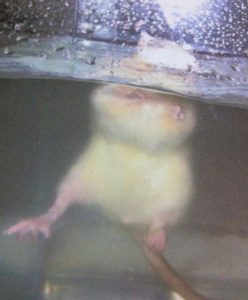Effect of acute water immersion stress on immunity markers of albino rats
Saliha CK
Department of Physiology, Annoor Dental College and Hospital, Muvattupuzha
Received: 4 – 06 – 2022
Revised: 11 – 06 -2022
Accepted: 2- 07 -2022
Address for correspondence: Dr Saliha CK, Reader, Department of Physiology, Annoor Dental College and Hospital, Muvattupuzha, E-mail: salihac.k111@gmail.com
This is an open access journal, and articles are distributed under the terms of the Creative Commons Attribution-Noncommercial ShareAlike 4.0 license, which allows others to remix, tweak, and build upon the work non-commercially, as long as appropriate credit is given and the new creations are licensed under the identical terms
How to cite this article: Saliha CK. Effect of acute water immersion stress on immunity markers of albino rats. J Oral Biomed Sci 2022; 1:72-5
Abstract
Aim and objective: Stress can affect the immunity system through different physiological pathways and also alters the inflammatory markers. The current study has designed to evaluate the effect of acute water immersion stress on selected immunity markers on albino rats.
Materials and methods: Twelve male albino rats were selected and examined. Rats were divided into two groups as control and experimental. Acute water immersion stress was induced in experimental group. Blood samples were collected and inspected for immunity markers.
Results: All the markers showed marked changes in acute stress. Changes in CD4 and CD8 showed strong significant changes.
Conclusion: The study reported the immunomodulatory effect of acute stress in albino rats.
Keywords: Acute stress, Albino rats, immunity markers
Introduction
Stress system is a complex structure of central and peripheral structures involved in stress responses. Specific areas in brain have distinct role in stress responses, the important once are CRH (corticotropin releasing hormone) and AVP (arginine – vasopressin) neurons, LC (locuscoerules) and central autonomic nervous system mainly sympathetic nervous system (SNS) 1. Peripheral components include the peripheral limbs of HPA axis, efferent autonomic nervous system and adrenomedullary system 2. Other than these pathways, some integrated pathways also mediate the stress responses but the actual cascading mechanism by which stress causes immune dysfunction is not elucidated completely. A review by Segestom and Miller is an elaborated study that explained the three pathways through which stress affects the immune system 3. First two are the SNS and HPA axis. Sympathetic fibers from the CNS innervated to the primary and secondary lymphoid organs. Neurotransmitters released by these fibers directly alter the functions of immune cells. Secondly the adrenal hormones and pituitary hormones secreted by HPA, SAM and HPO (hypothalamic Pituitary and ovarian axis bind to specific receptors on immune cells influence immune responses. The last possible route is through people’s activities to manage the stress. Use of alcohols, smoking and disturbed sleep also alter the immune function.
Material and methods
twelve male albino rats 6–8 weeks old weighing 180–200 gms were used for the experiment. The rats were divided into two groups of six rats. Animals were caged individually and maintained in an ideal laboratory condition room temperature at 22–24°C and 12-h light and dark cycle. The rats were fed with standard pellet and water ad libitum. All studies were conducted in accordance with the Committee for the Purpose of Control and Supervision of Experiments on Animals, India guidelines. The study protocol was approved by the Institutional Animal Ethics Committee.
The animals were divided into two groups as control and experimental group. Rats assigned to control group were kept in a standard laboratory condition without being exposed to any type of stress. Rats selected for the stress groups were exposed to forced swimming stress for 1 h in a glass water tank for 1 day 4. The temperature of the water was maintained at 28°C. Blood was collected from the retro-orbital venous sinus and used for CD4, CD8 estimation and total WBC count. Remaining sample centrifuged at 4°C, and the plasma used for the estimation of MPO and CRP.
Estimation of CD4 and CD8
Percentage of CD4+ and CD8+ cells was measured by flow cytometry (BD FACSCalibur). Antibodies were purchased from BD Scientific. 2 ml of CD8 and 1 ml CD4 antibodies mixed with 50 ml of whole blood and incubated for 15 min in the dark at room temperature. 450 ml of ×1 FACS lysing solution added to the blood antibody mixture and incubated in the dark for 15 min at room temperature and analyzed. Lymphocytes are selected by gating the appropriate population from SSC-H versus FSC-H plot. Cells are then analyzed from FL1-H versus FL2-H plot.
Estimation of MPO and CRP
We had used spectrophotometric method for the estimation. 25 ml of plasma mixed with 50 ml of water and 25 ml of 50 mM phosphate buffer. 100 ml of reaction mix containing O-Dianisidine, hydrogen peroxide, and buffer added to the plasma mixture. Enzyme kinetics was measured at 450 nm for 5 min. CRP level in plasma was estimated using automated immune turbi metric method.
Results
| Control | Water immersion stress | P value | |
| C Reactive Protein (CRP) | 5.5 ± 1.67 | 9.08 ± 3.3 | 0.09 |
| Myeloperoxidase (MPO) | 3.75 ± 1.25 | 5.28 ± 1.24 | 0.09 |
| CD4 | 12.9 ± 2.4 | 22.9 ± 3.03 | 0.002 |
| CD8 | 23.28 ± 2.81 | 31.9 ± 2.74 | 0.002 |
Acute water immersion causes an increase in inflammatory markers MPO and CRP level (64.8 %), but the changes were not significant. CD4 and CD8 level cause drastic significant increase in acute stress group when it compared with the control group.
Values obtained from the experiment were analysed by R software. ANOVA and Kruskal-Wallis tests were used for the comparison. Probability value less than 0.05 was considered as significant.
Discussion
Inflammatory markers selected for this study are MPO and CRP. Myeloperoxidase (MPO), a heme protein released by leukocytes is one of the most widely studied during the last decades. Its increasingly recognized that MPO plays a very important role as a part of innate immunity through the formation of microbicidal reactive oxidants. Measurements of MPO activity is a useful tool to analyse stress induced inflammation. Another inflammatory marker used here is CRP, is a prototypical acute phase serum protein rising rapidly in response to inflammation. It activates the compliment system to enhance the phagocytosis and is also studied as a marker of inflammation, disease activity and a diagnostic aid.
In the study both the inflammatory markers CRP and MPO showed non -significant increase in acute water immersion stress induced group when compared with the control group. Although multiple studies reported that stressors can influence the immunity, it is suggested that mode and duration of the stress also affect the same 5. Previous studies have shown that free radicals generated by the oxidative stress alter the immune system and causes inflammation by activating the transcription factors like Nuclear Factor Kappa B(NF-Kb), Activator Protein 1(AP-1) and NF-E2 related factor(Nrf2) 6. Reports shows that chronic stress suppress the NKCA (natural killer cell activity) and mitogen stimulated lymphocyte proliferation 7,8,9 and acute stress induce the same 10,11.
Our finding reports that acute stress increased the percentage of both CD4 and CD8 cells. Report by Volker Stefanski and Harald Engler said that acute (2 hour) confrontation increases the percentage of CD4 and CD8 and chronic (48 hour) decreases the same 11.
Conclusion
The current study suggests that acute water immersion stress is immunomodulatory. It increases the all-immunity markers selected for the study.
Conflict of interest: None
Financial support and sponsorship: Nil
References
- Habib, K. E., Gold, P. W.and Chrousos, G. P Neuroendocrinology of stress. Endocrinol Metab Clin North Am , 2001;30(3): 695-728.
- Chrousos GP. Stress and disorders of the stress system. Nat Rev Endocrinol 2009; 5(7):374-81.
- Miller, Suzanne C. Segerstrom and Gregory E. Psychological Stress and the Human Immune System: A Meta-Analytic Study of 30 Years of Inquiry. psychol bull. 2004; 4(130):601-30.
- Sandhya T Avadhany, Saliha C.K.Comparative study of antioxidants: curcumin and capsaicin on stress induced rats and its effects on liver . J. PharmTech Res.2016; 6(2) : 250-268.
- K. Agarwal and G.D. Marshall. Stress effects on immunity and its application to clinical immunology. Clinical and Experimental Allergy. 2001;31: 25-31.
- Meneghini A, Ferreira C, de Abreu LC, Valenti VE, Ferreira M, Filho CF. Memantine prevents cardiomyocytes nuclear size reduction in the left ventricle of rats exposed to cold stress.Clinics. 2009; 64:921-6.
- Bartrop R, Lazarus L, Luckhurst E, et al. Depressed lymphocyte function after bereavement. Lancet. 1977; 8016: 834–6.
- Cheng GJ, Morrow-Tesch JL, Beller DI, et al. Immunosuppression in mice induced by cold water stress.Brain Behav Immunity. 1990; 4: 278–91.
- Kiecolt-Glaser JK, et al. Psychosocial modifiers of immunocompetence in medical students. 1984, Psychosom Med. 984; Vol. 46: 7-14.
- Schedlowski M, Jacobs R, Stratman G, et al. Changes of natural killer cells during acute psychological stress. J Clin Immunol. 1993; 13: 119–26.
- Volker stefanski and harald. Effects of Acute and Chronic Social Stress on Blood Cellular Immunity in Rats.Physiology & Behavior. 1998; 64: 733–741.

Fig 1: Process of inducing water immersion stress



